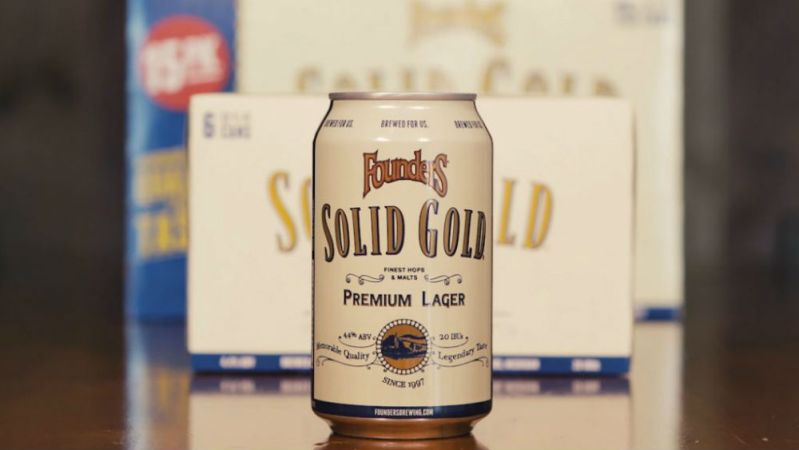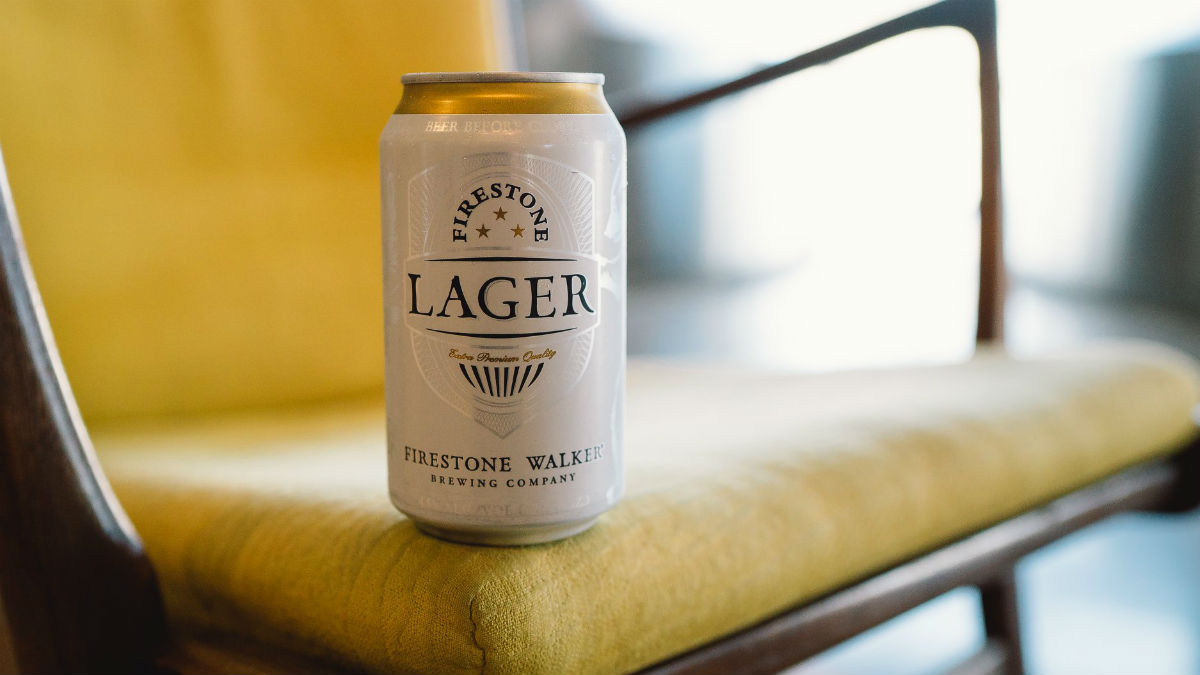
The beer industry is starting to come full circle.
With the release of Founders Brewing Co.’s Solid Gold and Firestone Walker Brewing Company’s Lager, two of the most influential craft brewers are now in competition with big-name lagers like Budweiser, Coors Light, Corona, Heineken, Stella Artois, and more . (Founders, it should be noted, no longer qualifies as a craft brewer according to the trade group Brewers Association, because of its 30 percent ownership by the Spanish brewery Mahou San Miguel.)
There are a lot of unknowns when it comes to lagers in the craft segment, mostly because so much of the industry has been built on the anti-macro lager ethos. Will they be successful? Will it take hurt those breweries’ reputations among dedicated craft consumers? Will the margins be sustainable at the relatively small sales volumes?
Those questions likely won’t be answered for a bit, especially for smaller breweries also trying to get into the same market space. But for Founders and Firestone, a future with lagers looks promising.
Despite the rapid growth of the craft segment slowing dramatically the past several years, Firestone and Founders have continued to expand like mad. Both have already found success with lighter beers; Founders dominates the session IPA section with All Day IPA and Firestone captivates drinkers with 805 Blonde Ale and, to a lesser extent, the excellent Pivo Pils. (It should also be noted Sierra Nevada, the granddaddy of craft beer, has been making the light, crisp and refreshingly clean Summerfest Lager for years.)
Early in their history, both breweries brewed basic lagers but gave them up as the craft industry took off, led by big, boozy stouts and bitter hop bombs. The return to the premium lager market is an effort to grab new drinkers and provide simple, uncomplicated, “beer-flavored beers” for people who want to think about their beer, which may disappoint craft aficionados. Don’t fret though — both breweries make stellar lineups top to bottom and the fact they’ve ventured into the supremely difficult to brew “simple” beer world, it’s unlikely the rest of their offerings will drop in quality.
“Making a clean, easy-drinking lager like this is really hard,” Firestone brewmaster Matt Brynildson said in a marketing booklet about Firestone Lager. “You start with this transparent canvas that would otherwise reveal the smallest flaw. You can’t hide any rough edges with hops or anything like that.”
Firestone Lager was first brewed in 2000, but took a back seat until this year. It’s an all-malt lager in the Munich Helles tradition with traditional hops and no dry hopping, leaving a crisp, clean beer with incredible drinkability no matter where it’s consumed.
“People are ready for a beer like this — a true craft beer with this incredible drinkability,” Brynildson said. “Craft lagers are breaking the mold of domestic lager, offering the same drinkability but at a much higher quality.”
Founders, on the flip side, does thin its lager out with corn, an adjunct ingredient often shunned by dedicated craft consumers. However, most traditional pre-Prohibition lagers used corn, and the addition creates an easy layer of flavor for unseasoned craft drinkers. Founders is releasing 24-packs of Solid Gold, which isn’t common in the craft segment and can be seen as an attempt to grab the summer party crowd it hasn’t already cornered with All Day IPA.

“Solid Gold combines accessibility and affordability in a full-flavored premium lager, and it just makes sense to push the envelope with new packaging options that encourage trial and appeal to our consumers,” Founders CEO and co-founder Mike Stevens said in a release.
“Solid Gold is a great starting point for people who are craft curious,” co-founder and president Dave Engbers added. “It’s not over-complicated. It’s simple and well-rounded, full-flavored, but also light and crisp.”
Whether these lagers will be a gateway for new drinks to other beers in the portfolio or if loyalists remain dedicated to the brand, the the new releases could be a sign that history is repeating itself. The U.S. beer scene was purely local in the 1800s. It evolved post-Prohibition at end of the 19th century into a national, homogenized commodities, led by the likes of Anheuser Busch, Coors, Schlitz, Stroh’s, and so many more. As the beer industry is making its way back to the regionalized and localized markets, Firestone and Founders are making a play to be two of the few breweries that truly transcend both trends.




